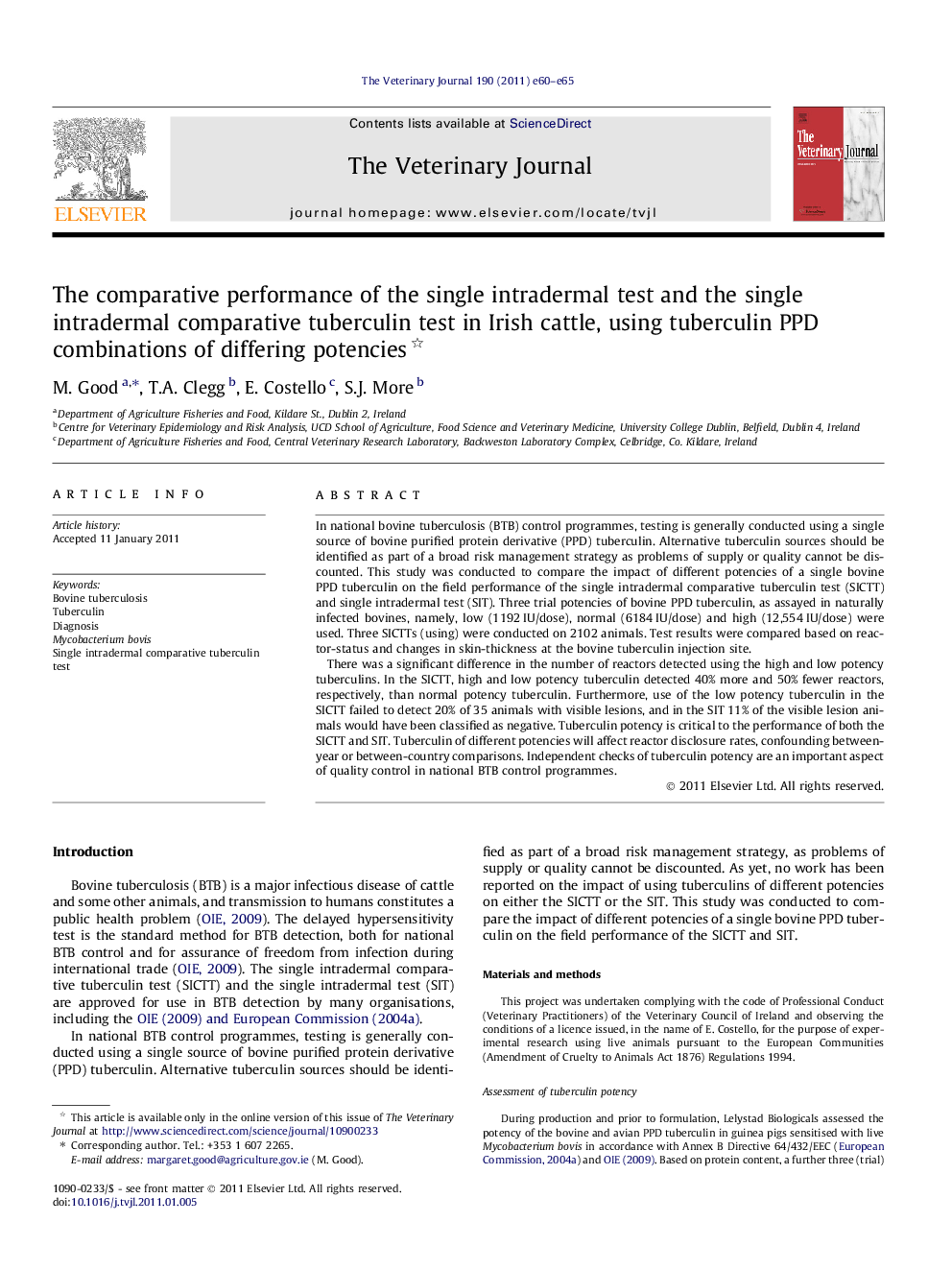| Article ID | Journal | Published Year | Pages | File Type |
|---|---|---|---|---|
| 2464527 | The Veterinary Journal | 2011 | 6 Pages |
In national bovine tuberculosis (BTB) control programmes, testing is generally conducted using a single source of bovine purified protein derivative (PPD) tuberculin. Alternative tuberculin sources should be identified as part of a broad risk management strategy as problems of supply or quality cannot be discounted. This study was conducted to compare the impact of different potencies of a single bovine PPD tuberculin on the field performance of the single intradermal comparative tuberculin test (SICTT) and single intradermal test (SIT). Three trial potencies of bovine PPD tuberculin, as assayed in naturally infected bovines, namely, low (1192 IU/dose), normal (6184 IU/dose) and high (12,554 IU/dose) were used. Three SICTTs (using) were conducted on 2102 animals. Test results were compared based on reactor-status and changes in skin-thickness at the bovine tuberculin injection site.There was a significant difference in the number of reactors detected using the high and low potency tuberculins. In the SICTT, high and low potency tuberculin detected 40% more and 50% fewer reactors, respectively, than normal potency tuberculin. Furthermore, use of the low potency tuberculin in the SICTT failed to detect 20% of 35 animals with visible lesions, and in the SIT 11% of the visible lesion animals would have been classified as negative. Tuberculin potency is critical to the performance of both the SICTT and SIT. Tuberculin of different potencies will affect reactor disclosure rates, confounding between-year or between-country comparisons. Independent checks of tuberculin potency are an important aspect of quality control in national BTB control programmes.
